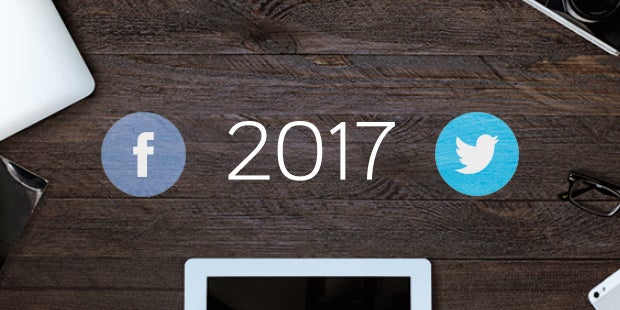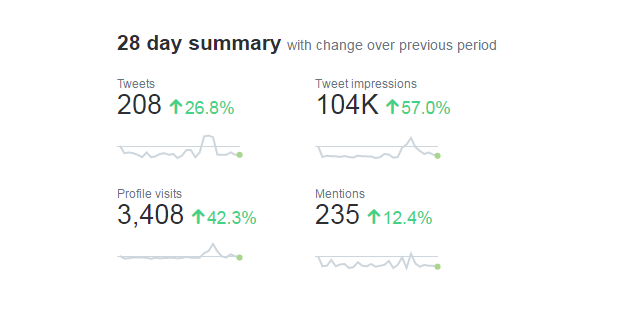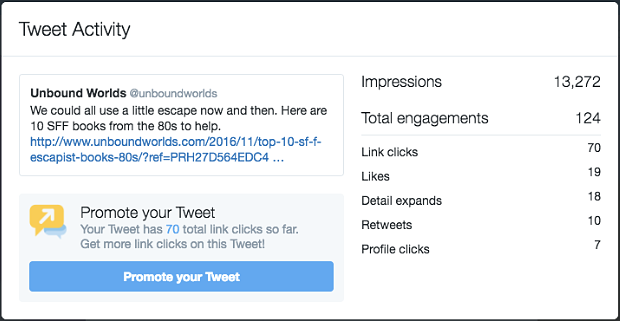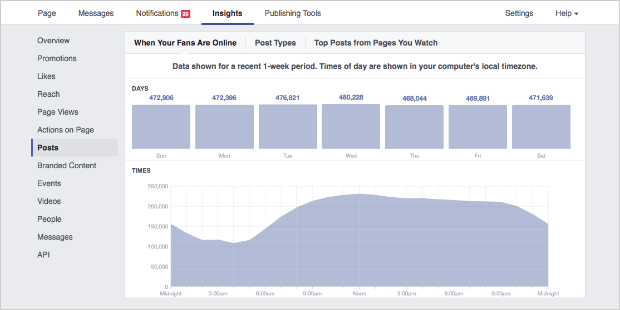Last month, we hosted a webinar on Facebook and Twitter Analytics. In this article, we discuss some of the takeaways from that webinar, as well as let you know how these ideas can help shape your 2017 social media goals.
Facebook Insights
With 1.71 billion monthly active users, Facebook is still the market leader in social networking sites. Facebook’s fan pages help discoverability and foster direct engagement with fans, and its status means it has had a lot of time to develop and tweak tools for its users. Authors can use the Facebook Insights tool to monitor and increase engagement on Facebook.
In the case of Facebook, engagement means likes, comments, shares, photo clicks, link clicks, page likes, and so on. One of the best ways to figure out how your posts are performing on Facebook is by looking at how many people have seen your post, or the post’s reach. The more engagement you get on the post, the greater the reach, because if someone comments on or shares your post, that activity might show up in their friends’ newsfeeds, exposing more people to your content.
When you click into the Insights tab, you’ll be brought to the overview for your page, where you’ll see page views, your Facebook reach, and engagements. You can click into any of these areas to get more general information about how your fan page is doing.
Facebook’s algorithm only shows each post to about 1 to 3% of your total fan base organically. Additional reach is earned by post engagements and/or advertising spend. General reach can be found at the bottom of each individual post; more detailed information about engagements can be found in Insights.
Twitter Analytics
Twitter is a fast-paced, in-the-moment platform that works well for breaking news, entertainment, and opinion sharing as they happen. The platform offers a direct way to interact with followers and engage in conversations. It’s a great way to listen in on conversations and gauge opinion and sentiment. Similar to Facebook, you are able to use the Twitter Analytics tool to monitor and increase engagement with your readers.
On the main Twitter Analytics page, you start with an overview of the last twenty-eight-day period. This will show how many tweets you’ve sent, the impressions—or views—your tweets have made, your profile visits, and your mentions. It also compares your data with the previous month, so you can have a broader overview of how your tweets are doing. This is a good page to visit a couple times per month, so you can keep track of your campaigns at a glance.
When you click a specific tweet, you’ll be brought to the tweet activity page. This will break down in detail how other Twitter users have interacted with your post: whether they “liked” it (previously called “favorite”), if they’ve clicked through to a video, or if they’ve replied to it. A good rule of thumb is that if the number of engagements on a post surpasses your follower count, you can consider it very successful, because many people have shared it with their followers as well.
Using Insights and Analytics to Set Social Media Goals
As explained in the New Year’s Resolution for Authors post from early 2016, the four steps when setting goals for your social media platform are to find your audience, build your audience, engage your fans, then measure and repeat. Insights and Analytics are especially helpful for that last step.
On the Posts subsection of Facebook Insights, you’ll see a useful tool that shows you when your fans are online and active. As shown in the image below, you’ll see a graph of online fans per hour. Use this graph to plan your posts, making sure to hit your fans’ most active hours. Note that the lifespan of Facebook posts is longer than post lifespan on platforms like Twitter, so you can post at least an hour before peak online times, to make sure the most people see it when they get online. You can also use this page to set daily or weekly social media goals. If you schedule posts to go out during the most active times, you’ll have the best chance of getting more engagement.
Emily Hughes is Manager of Content Development & Social Media for Penguin Random House.






